FOR THOSE WHO HAVE SEEN THE ELEPHANT
Artist Statement
I was 12 years old. Sensing that I was falling out of favor with my social studies teacher, I volunteered to do a presentation for extra credit. The subject would be my grandfather, a D-Day veteran of World War II, awardee of two Purple Hearts.
A man who never spoke about his time in the war, I quickly understood why as he unearthed painful details in response to my naive questions.
“Did you ever suffer from shell-shock?”
He answered by saying, “Grandma will tell you of a time when we went to a 4th of July party on the beach shortly after I got back to the States. When the fireworks went off, I started digging a trench.”
The fireworks and waves, sounds of celebration, victory, the feelings of liberation and peace that visiting the ocean often inspires, intertwined with the sense of grave threat and extreme panic he felt in that moment has played on repeat in my mind ever since. I saw and still see the colorful bursts blooming over his head as his young body desperately ran for cover, having entered an entirely different dimension. This indelible scene became an obsession of mine, something to extract clues from. Like a baby found on my doorstep, I took it in though not knowing what to do with it yet.
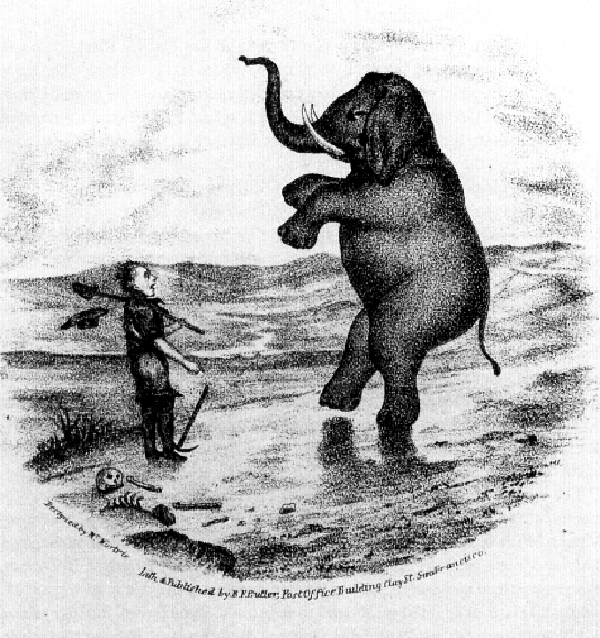
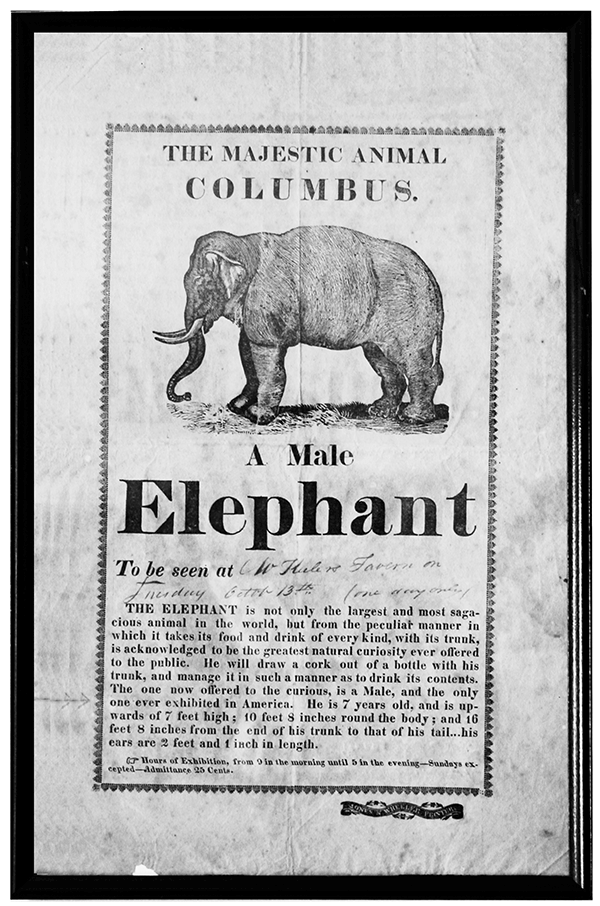
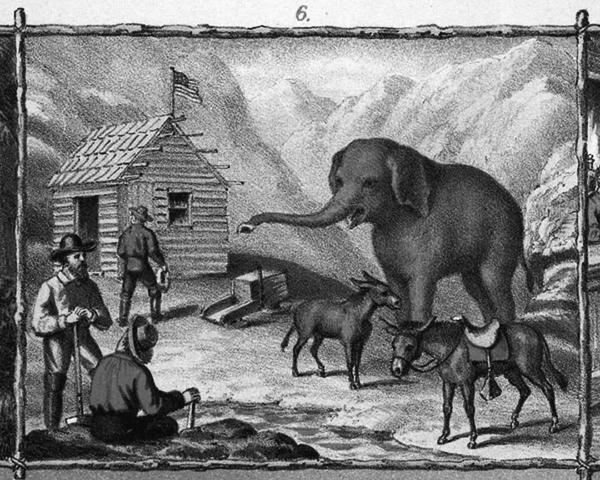

In the 19th century, the elephant was considered the largest, most exotic animal of the traveling circus. When it came to town, you had to see it. “To see the elephant” was an idiom originally coined in the United Kingdom that meant to see the world in all its mysterious magnitude. The idiom’s use became popular among veterans of the Civil War and Mexican-American War, and among pioneers in the American West as a reference for having “seen” enough or perhaps too much — the “elephant” referring to a bloody battle, the merciless wilderness, and the “others” that inhabited that wilderness. Could it be that when these disillusioned disciples of national ideals and expansion said they had “seen the elephant,” what they meant was that they had visited the intersection where different realities — subjective and objective, lived and historicized — contradict one another?
This idiom, or intersection, reminded me of another elephant, the one found in the ancient Buddhist parable about blind monks who each touch a different part of the beast and are asked to describe it. Each gives a different description, and though no description is inaccurate — an elephant has a trunk, an ear, a tail, etc. — none captures the entirety of the animal, and thus the monks argue about the true nature of the elephant. This fable echoes the timeless wisdom that what we might perceive as “reality” could simply be a one-sided perspective, and when mistaken for the total truth, fuels conflict.
Over time, the significance of the fireworks in my grandfather’s story became as meaningful as his reaction to them. Fireworks that illuminate night skies with bursts in blues, greens, reds, pinks, purples, and golds would not have been possible without the invention of gunpowder, one of the most gruesome substances produced by humankind. What comes first: the war, or the parade? Could they exist without one another? Are they even different?
Just as the firework festivities on the beach that evening translated into bombs and gunfire for my grandfather, the freedom and privilege of some has meant oppression and violence toward others. That the two are inextricably linked is evidenced in the history of the United States and Western civilization, often rooted in white supremacy. The Inscape Building bore witness to this dichotomy during the decades it operated as a U.S. Immigration and Naturalization Station — a gateway that let some in, sent others out, and sometimes detained people indefinitely, often underpinned by racist policy. Objective realities formed by subjective ones.
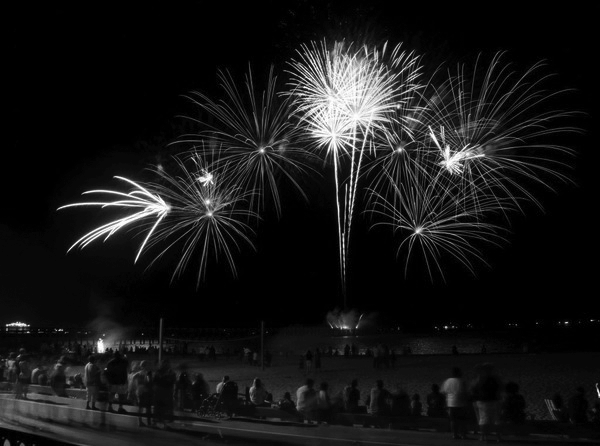
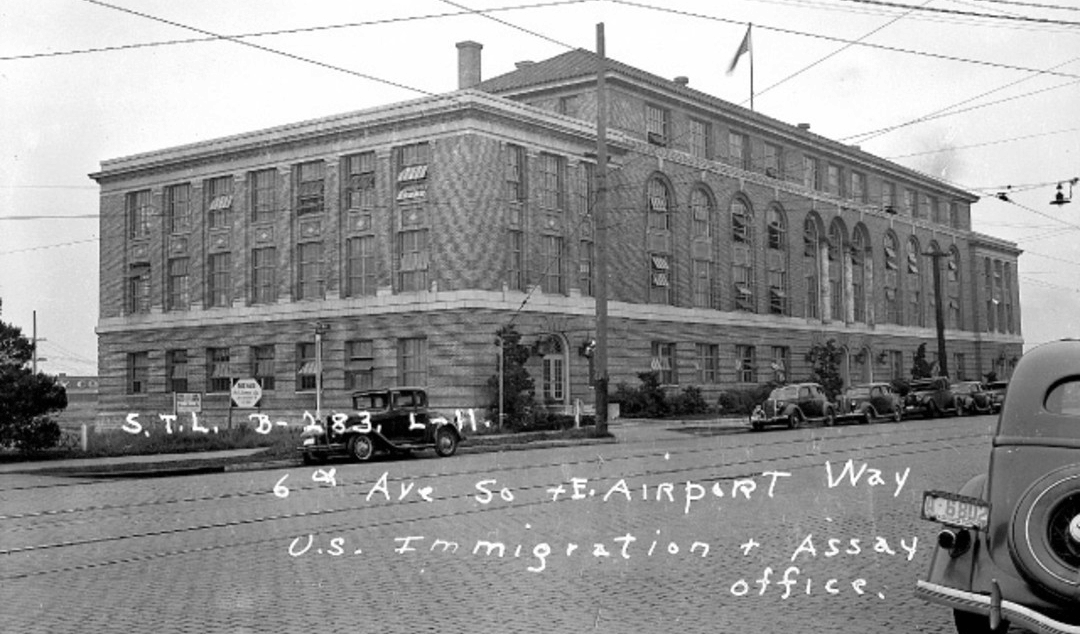

“Sdzidzilalitch,” or “Little Crossing-Over Place.” This is the Whulshootseed name of the grounds the Inscape building stands today.3 Not long before it was erected, the Duwamish, Suquamish, and Muckleshoot fished flounder from the very same location before they were banished from the city toward the end of the 19th century. Long houses were burned, old growth forests feld, pathways to inland villages paved over, burial grounds dug up. A once ancient, organic, tidal, lifegiving landscape was transformed into a new hard, artificial, wounding one. However solid the ground below the Inscape building is, it still rests on water in a sense, as do all institutions believed to be sturdy.
There is hardly a comprehensive accounting of the full costs of “freedom” and “patriotism,” or of who is deprived of what so that others can rest comfortably under these banners. To act in the name of “freedom” often deprives others of their natural liberties. To say that everyone is equally free and equal in this country is a one-sided perspective or fiction, not reality. Some argue that the U.S. is better than most countries, and this fiction is essential to the durability of that “reality.” However, insisting on this reality is akin to building onto a house of cards, ignoring the reality of gravity, and being surprised when it crumbles. Walk the halls of the Inscape Building. Read the informational plaques about what took place there. Take in the names and places of origin of detainees, graffiti written in roofing tar on the walls of the 2nd-floor courtyard. Conjure the ghosts of the original human stewards and the names they gave the massive cedars, the creek with the best drinking water, the cove to net duck at, names absent from our lexicon. Then reconsider ideas of “freedom” and “patriotism.” Do these American notions still feel like they stand on solid ground?
I began building For Those Who Have Seen the Elephant when our house of cards seemed to be on the verge of collapse, the ground beneath began to crumble. As the pandemic took hold, I sewed flags in isolation, day in, day out. As the flags multiplied, so too did the painful clarity that the fiction our country had fed itself was crystalizing into a terrifyingly contradicting fact. Around when I was finalizing the fireworks footage and audio, the stories of Ahmaud Arbery, Breonna Taylor, and George Floyd rolled in like a storm, uncovering the tombs where an endless number of other victims of racial injustice had been concealed. Breath, a medium I use frequently in my audio pieces and something featured prominently in the audio for Elephant, took on an entirely different meaning. Who paid the price for me to breathe unencumbered?
Had the monks in the Buddhist parable not been blind, they would’ve seen the whole elephant, understanding their tunnel vision. Today, we see a lot, on multiple screens, at all hours of day and night. If we see a lot, do we see everything? Perhaps we see too much, and perhaps seeing too much is itself a kind of blindness. Memories are a way of seeing. So too is considering what is not in view, or what the opposite is of what you do see — the names of things not in our language. These tools expand our vision, our minds, and our futures. Whether we deploy these tools or not, the elephant is still there, in all its subjective truth and objective reality, its fiction and fact, its beauty and terror, its sturdiness and fragility, its victors and victims.
-Emily Tanner-McLean